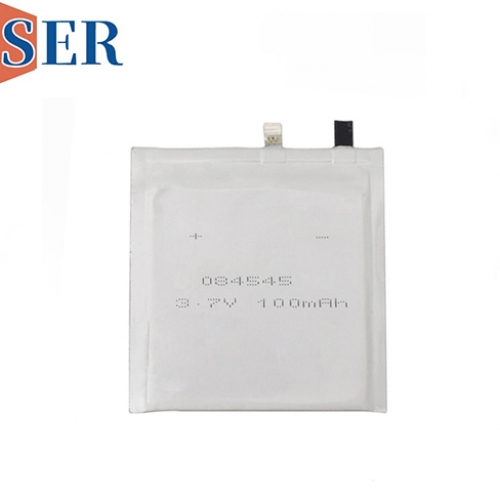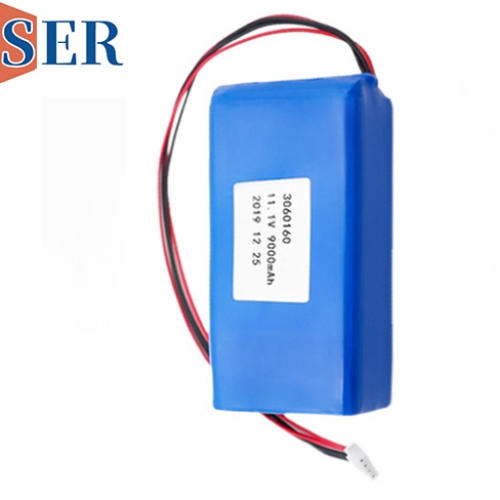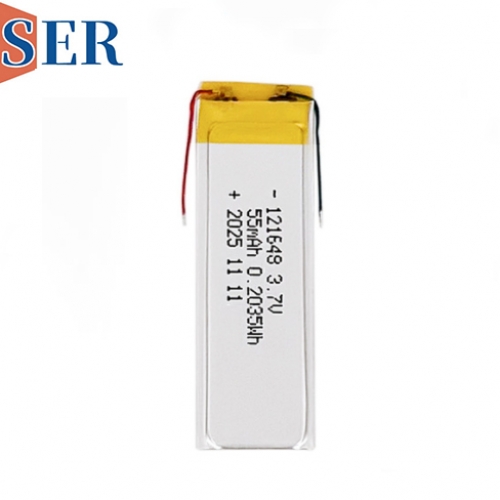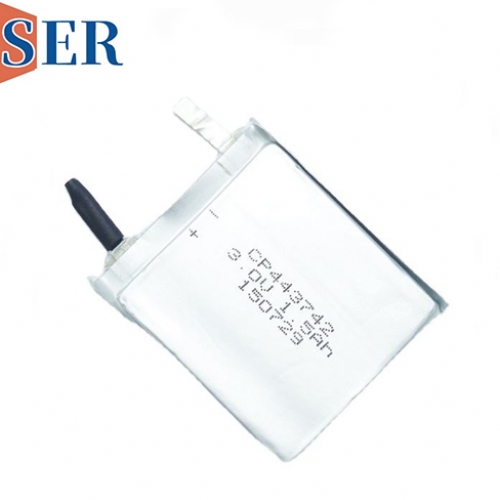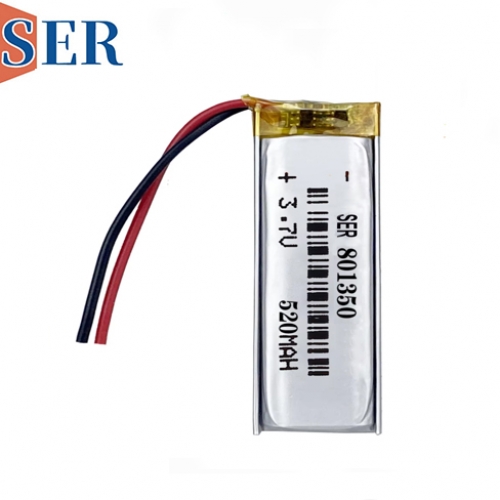CP321725 3.0V 250mAh Small LiMNO₂ Pouch Cell for RTLS and Asset Tracking
CP321725 3.0V 250mAh Small LiMNO₂ Pouch Cell for RTLS and Asset Tracking

Abstract
In the realm of real-time location systems (RTLS) and asset tracking, the demand for compact, reliable, and long-lasting power sources has never been greater. The CP321725 3.0V 250mAh small lithium manganese dioxide (LiMNO₂) pouch cell emerges as a standout solution, offering a unique blend of ultra-thin design, extended lifespan, safety, and customizability. This article delves into the technical specifications, advantages, and diverse applications of the CP321725 battery, highlighting its pivotal role in advancing RTLS and asset tracking technologies within the Internet of Things (IoT) ecosystem.
1. Introduction
The proliferation of IoT devices has transformed the landscape of asset tracking and RTLS, enabling businesses to monitor and manage their assets with unprecedented precision and efficiency. However, the success of these systems hinges on the availability of robust and efficient power sources. The CP321725 3.0V 250mAh small LiMNO₂ pouch cell addresses this need by providing a compact, high-performance battery solution tailored for tags and RTLS devices used in asset tracking and other IoT applications.
2. Technical Specifications of the CP321725 ultra thin Battery
2.1 Ultra-Thin Design and Compact Form Factor
The CP321725 ultra thin battery is engineered in a pouch cell format, which allows for an ultra-thin profile without compromising on energy density. This compact design makes it ideal for integration into small, portable devices such as RFID tags, Bluetooth beacons, and other RTLS sensors. The slim form factor ensures that the battery does not add significant bulk to the device, facilitating seamless integration and deployment in various environments.
2.2 Stable 3.0V Output and High Energy Density
Despite its small size, the CP321725 battery delivers a stable 3.0V output, which is crucial for maintaining the accuracy and reliability of RTLS and asset tracking systems. The high energy density of the LiMNO₂ chemistry ensures that the battery can store a substantial amount of energy relative to its volume, providing extended runtime on a single charge. This is particularly important in applications where devices may need to operate continuously for extended periods without access to recharging facilities.
2.3 Long Lifespan and Durability
One of the standout features of the CP321725 battery is its long lifespan. LiMNO₂ chemistry is renowned for its excellent cycle life and calendar life, meaning the battery can withstand numerous charge and discharge cycles without significant degradation in capacity. This durability is essential in RTLS applications, where devices may be deployed for years without replacement, reducing maintenance costs and downtime.
2.4 Enhanced Safety Features
Safety is a top priority in battery technology, especially in applications where devices may be subjected to harsh environmental conditions or mechanical stress. The CP321725 battery incorporates several safety features to prevent thermal runaway, overcharging, and other hazardous conditions. These include built-in thermal shutdown mechanisms, overcharge protection circuits, and robust cell construction to withstand physical impacts.
2.5 Ease of Customization and Integration
The pouch cell format of the CP321725 battery offers significant advantages in terms of customization and integration. Manufacturers can tailor the size, shape, and capacity of the battery to fit the specific requirements of the device, allowing for optimized performance and form factor. Additionally, the battery's flexible design facilitates easy integration into various device configurations, reducing development time and costs.
3. Advantages of the CP321725 Battery in RTLS and Asset Tracking Applications
3.1 Improved Asset Visibility and Management
In asset tracking applications, the CP321725 battery enables tags and sensors to operate continuously, providing real-time visibility into the location and status of assets. This enhanced visibility allows businesses to optimize inventory management, reduce losses due to theft or misplacement, and improve overall operational efficiency.
3.2 Enhanced Accuracy and Reliability of RTLS Systems
The stable 3.0V output and high energy density of the CP321725 battery contribute to the accuracy and reliability of RTLS systems. By ensuring consistent power delivery, the battery helps to minimize errors in location tracking, enabling businesses to make more informed decisions based on accurate data.
3.3 Reduced Maintenance Costs and Downtime
The long lifespan and durability of the CP321725 battery reduce the need for frequent battery replacements, lowering maintenance costs and minimizing downtime. This is particularly beneficial in applications where devices are deployed in remote or hard-to-reach locations, where accessing and replacing batteries can be challenging and costly.
3.4 Scalability and Flexibility
The ease of customization and integration of the CP321725 battery makes it a scalable solution for RTLS and asset tracking applications. Whether deployed in a small-scale pilot project or a large-scale enterprise deployment, the battery can be tailored to meet the specific needs of the application, ensuring optimal performance and cost-effectiveness.
4. Applications of the CP321725 Battery in IoT
4.1 Logistics and Supply Chain Management
In logistics and supply chain management, the CP321725 battery powers RFID tags and sensors used to track the movement and location of goods throughout the supply chain. This enables businesses to monitor inventory levels, optimize shipping routes, and reduce delivery times, improving customer satisfaction and operational efficiency.
4.2 Healthcare and Medical Devices
In healthcare settings, the CP321725 battery is used to power portable medical devices and monitoring systems, such as patient tracking tags and asset management sensors. These devices help healthcare providers to improve patient safety, streamline workflows, and reduce costs by providing real-time visibility into the location and status of medical equipment and supplies.
4.3 Smart Cities and Infrastructure Monitoring
In smart city initiatives, the CP321725 battery is employed in sensors and tags used to monitor infrastructure, such as bridges, roads, and utilities. These devices provide real-time data on the condition and performance of infrastructure assets, enabling city planners to make informed decisions about maintenance, repairs, and upgrades.
4.4 Retail and Inventory Management
In retail environments, the CP321725 battery powers electronic shelf labels (ESLs) and inventory tracking tags, helping retailers to optimize stock levels, reduce out-of-stock situations, and improve the shopping experience for customers. By providing real-time visibility into inventory levels, retailers can make more accurate purchasing decisions and reduce waste.
5. Future Trends and Innovations
5.1 Integration with Energy Harvesting Technologies
To further enhance the longevity and sustainability of battery-powered devices, future innovations may involve the integration of energy harvesting technologies with the CP321725 battery. These technologies, such as solar cells, kinetic energy harvesters, and RFID energy harvesting, could supplement or even replace traditional batteries in certain applications, reducing the need for frequent battery replacements and minimizing environmental impact.
5.2 Advancements in Battery Management Systems
Advanced battery management systems (BMS) are being developed to optimize battery performance and extend battery life. These systems could be integrated with the CP321725 battery to monitor battery status in real-time, adjust charging and discharging rates to prevent damage, and provide users with accurate information about battery health and remaining capacity. Smart BMS could also enable predictive maintenance, alerting users to potential battery issues before they lead to system failures.
5.3 Sustainable Materials and Manufacturing Processes
The demand for sustainable and environmentally friendly battery technologies is driving innovations in materials science and manufacturing processes. Future developments may involve the use of recyclable materials, reducing the reliance on rare and expensive metals, and developing more efficient and less polluting manufacturing methods for the CP321725 battery. These efforts aim to minimize the environmental footprint of battery production and disposal while maintaining or improving battery performance.
6. Conclusion
The CP321725 3.0V 250mAh small LiMNO₂ pouch cell represents a significant advancement in ultra-thin battery technology for RTLS and asset tracking applications within the IoT ecosystem. Its combination of ultra-thin design, stable output, long lifespan, safety, and customizability makes it an ideal power source for tags and sensors used in various industries. As IoT continues to evolve and expand, the CP321725 battery will play a crucial role in enabling businesses to achieve greater visibility, efficiency, and sustainability in their asset tracking and RTLS initiatives. With ongoing innovations in battery technology and integration with emerging trends, the future looks bright for this compact yet powerful battery solution.

